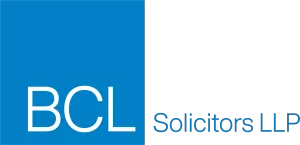- in United Kingdom
- within Environment, Privacy, Government and Public Sector topic(s)
What powers does an inspector have to serve an improvement notice or prohibition notice?
Sections 18 to 26 of the Health and Safety at Work etc. Act set out the enforcement powers available to a Health and Safety Executive ('HSE') or local authority inspector ('Inspector'). Sections 21 and 22 give an Inspector the authority to serve an improvement or prohibition notice ('Notice').
What is an improvement notice?
An improvement notice may be issued where an Inspector is of the opinion that the recipient is contravening health and safety law, or has previously contravened health and safety law in circumstances that make it likely that the contravention will continue or be repeated. The purpose of an improvement notice is to require the recipient to take steps to remedy the breach in a specified time period.
What is a prohibition notice?
A prohibition notice can be issued where the Inspector is of the opinion that an activity that is carried out or likely to be carried out involves a risk of serious personal injury. A prohibition notice requires the recipient to cease the relevant activity, usually immediately, until remedial steps in relation to the risk of injury and addressing any breach of health and safety law have been taken.
When are Notices issued?
A Notice may follow issues identified during a routine site inspection or reactive site inspection carried out because of an incident or complaint.
An Inspector has the power to enter any premises to carry out an inspection where he has reason to believe it is necessary for him to do so for the purposes of carrying out his responsibilities. Once the Inspector has entered, he can investigate and examine, take samples and measurements, and detain articles for evidence. An Inspector also has powers to require the provision of certain information and documentation. A person who contravenes a requirement of an Inspector or intentionally obstructs an Inspector may commit an offence.
What factors will an Inspector take into consideration prior to issuing a Notice?
An Inspector will consider whether enforcement action is necessary based on their inspection findings using the principles set out in the HSE's Enforcement Policy Statement (EPS) and using the decision framework in the HSE's Enforcement Management Model (EMM). Where there is a risk of serious personal injury, a prohibition notice will be considered at the outset to control the risk. In all cases, an Inspector will consider the risk gap i.e. the gap between where the dutyholder is and where the dutyholder should be if complaint. They will go on to consider 'dutyholder factors' before deciding what enforcement action to take. These factors help ensure any enforcement action is fair and reasonable and include: any history of previous incidents or enforcement action, any deliberate attempt to seek economic advantage, any actual harm, the inspection history of the dutyholder, the general level of compliance with health at safety at the premises in question, and any factors that affect the Inspector's confidence in the dutyholder's ability to comply.
The Inspector will also take into consideration other strategic factors. This means considering, for example, the broader socio-economic impact of the enforcement action, whether the public interest test is met, whether vulnerable groups are protected, whether the action will result in sustained compliance and whether there is an effect on other dutyholders.
Where an improvement notice is served, the Inspector will normally discuss the notice with the dutyholder and should, if possible, resolve points of difference. The Inspector may, where necessary, inform the dutyholder's employees or their representatives of the action taken or proposed to be taken.
What information is included in an improvement notice?
An improvement notice should state that the Inspector is of the opinion that there is a contravention of health and safety law, or there has been a contravention that is likely to be repeated. The notice should specify the relevant provision or provisions and state the reasons why the Inspector is of the opinion that there has been a breach. Although a recipient should act as soon as they reasonably can, the notice will specify a compliance date i.e. the date by which the recipient is required to remedy the contravention. This will be at least 21 days from the date the improvement notice is issued. The notice may include directions as to the remedial measures to be taken, including references to an Approved Code of Practice (ACOP) or different options regarding how the contravention should be remedied.
What information is included in a prohibition notice?
A prohibition notice should state that the Inspector is of the opinion that activities falling under health and safety law involve a serious risk of personal injury. The notice should also specify the matters that give rise to the risk. A contravention of health and safety law is not necessary for a prohibition notice to be valid but where in the Inspector's opinion any of those matters involves a contravention of health and safety law, they must state that they are of that opinion, specify the provisions being contravened and give details of the reasons why they are of that opinion. The prohibition notice will direct that the activities to which the notice relates should not be carried out under the control of the person on whom the notice is served unless the risk is removed and any associated contraventions have been remedied.
Why is it important to comply with a Notice?
It is a criminal offence to fail to comply with the requirements of a Notice, which can be punishable by a fine and/or imprisonment.
Where the Notice has been issued in reasonable circumstances, a good level of cooperation in resolving matters is therefore desirable. Prompt and comprehensive remedial action can assist when the Inspector subsequently considers whether any further enforcement action is required and, if so, form useful mitigation in any prosecution. It may be possible to obtain an extension prior to the compliance date if the timeframe causes difficulties.
Can a Notice be withdrawn?
Notices are often issued at short notice following an accident or incident. It is inevitable that some will be issued based on imperfect information and without contact being made with key personnel or without taking crucial information or documentation into account. It is unlikely the recipient will have had an opportunity to take legal advice prior to the Notice being issued.
In some circumstances, Notices can be withdrawn or modified by the regulator.
Can a Notice be appealed?
Both improvement and prohibition notices can be appealed to the Employment Tribunal in certain circumstances.
Recipients have a time limit of 21 days for bringing an appeal. This time limit can be extended by the Employment Tribunal where it is satisfied that it was not reasonably practicable for the appeal to be brought within the 21-day period.
What happens once an appeal is lodged at the Employment Tribunal?
A notable incentive of appealing an improvement notice is that it has the effect of suspending its operation. An appeal does not automatically suspend a prohibition notice, but a written application for a suspension can be made pending the outcome of the appeal. There is no guarantee that such an application will be successful and in most cases a recipient will have to await the outcome of the appeal.
Once the appeal has been received by the Employment Tribunal, a copy will be sent to the Inspector. The tribunal will normally list the appeal for a preliminary hearing. At this hearing, the tribunal will seek to define the issues and give orders setting out the steps the parties must take for the appeal to be ready for a final hearing. This hearing can be held over the telephone or face to face and normally it is only the parties' legal representatives that need attend. It will be dealt with by an Employment Judge sitting alone.
At a final hearing, the Tribunal may either affirm or cancel the Notice. The Tribunal may also affirm the Notice but with amendments.
Helpfully for appellants, in the case of HM Inspector of Health and Safety v Chevron North Sea Limited, the Supreme Court found that Employment Tribunals must take into consideration all available evidence relevant to the state of affairs at the time of service of the Notice, including information coming to light after it was served. There may be an important document or significant witness evidence, including expert evidence, which was not available to the Inspector at the time the Notice was served. An Employment Tribunal is expected to consider such material when determining the appeal.
The HSE has the power to recover the cost of time spent dealing with a material breach which a dutyholder has been notified of under the Fee for Intervention Scheme ('FFI'). Accordingly, a business may receive FFI invoices following an inspection which led to the service of a Notice. Consideration should also be given at the outset to challenging (by way of the HSE's query and dispute process) any such invoices.
What should I do if served with a Notice?
The service of a Notice can be hugely damaging for a business. The immediate consequences can be loss of trade, reputational harm and costs associated with remedial action (which may be significant and unnecessary if the Notice is flawed). Details of the Notice are recorded on a publicly accessible database on the HSE's website and are available to view for five years. Notices may have to be declared when tendering for new contracts or on applying to join an approved suppliers list. They can also have important repercussions in prosecutions against the recipient, for example, an impact on a defendant's character during trial or its previous safety record during sentencing (an aggravating factor which may increase the ultimate penalty). Most significantly, a Notice often marks the start of an investigation, and a prosecution for health and safety offences with the potential for significant financial penalties and custodial sentences may follow.
Accordingly, businesses should have appropriate procedures in place for the urgent internal escalation of any inspection that may result in a Notice. Any business in receipt of a Notice should consult with specialised legal representatives as soon as possible.
The content of this article is intended to provide a general guide to the subject matter. Specialist advice should be sought about your specific circumstances.



